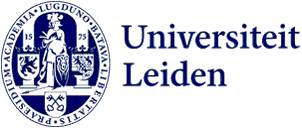
How bittersweet sugar chemistry targets pathogens
The challenge is considerable, but so is the satisfaction when it succeeds: creating complex sugar molecules that play a role in biology. Professor of Chemistry Jeroen Codée wants to shed light on this ‘dark matter of biology’, partly to combat hospital bacteria.
‘If you need a particular fragment of DNA, you provide the base sequence and a day later the primers to make it are delivered by post’, Codée says. Proteins are also relatively easy to work with as a researcher. At least, they are compared to the complex sugar compounds that have many functions in all facets of life. ‘Sugars are like the dark matter of biology, as Nobel laureate Carolyn Bertozzi so aptly described them.’
Sugar coating like candyfloss
Codée explains: ‘Almost half of all proteins contain sugars. Your blood group is determined by sugars on the outside of a red blood cell. Bacteria have a sugar coating around their cell wall like a kind of candyfloss, hiding the proteins by which our immune system can recognise them. This is how they stay under the radar. That sugar coating also sometimes changes its characteristics.’
In the field of sugar chemistry, scientists are trying to recreate these kinds of complex sugars. ‘If that succeeds, immunologists, for example, will be able to see how the immune system reacts to it. Once we understand that, it becomes possible to target pathogens with new vaccines or antibiotics.’ In this way, Codée’s products are like rods with which other scientists can go fishing.
Chains or jumbles of Lego bricks
Codée works with biologists to decide which molecules he wants to produce. If you imagine the different types of sugar molecules as Lego blocks, the complex sugars are chains or a jumble of different colours and shapes. Codée and his team managed to recreate a reasonably long fragment of sugar from the outer layer of the persistent hospital bacterium Staphylococcus aureus. ‘Now we need to test whether that fragment is enough to use to investigate how that bacterium bypasses our immune system.’
‘Another dream’, Codée continues, ‘is to recreate zwitterionic polysaccharides. These are sugar chains that behave like a protein. They can activate the T-cells in our immune system. We managed to make a long version of these too, long enough to take on the helix shape it has on bacteria as well. If you can recreate these specific sugar chains from certain pathogens, they could serve as a vaccine.’
Bittersweet symphony
The title of Codée’s inaugural lecture is A Bitter Sweet Symphony. The bitter refers to how hard researchers must work. ‘We still don’t fully understand exactly how sugars react. It’s incredibly difficult to get our hands on exactly the product we want. That is extremely important because variants with very subtle differences function very differently.’
While DNA and proteins are created using templates of base pairs and amino acids, respectively, it works differently with sugar chains. ‘They are made by an interaction of many different enzymes. For us, it is a matter of prolonged trial and error in the lab, while ideally you would make a calculation beforehand and then be able to make what you want.’ After much effort – if you are lucky – the sweet side of the symphony emerges. ‘It’s extremely satisfying when it finally succeeds.’
Jeroen Codée will deliver his inaugural lecture, A Bitter Sweet Symphony at 14.00 on Friday 22 September.
Text: Rianne Lindhout
Image: Pseudomonas bacteria are protected by a complex sugar layer.
